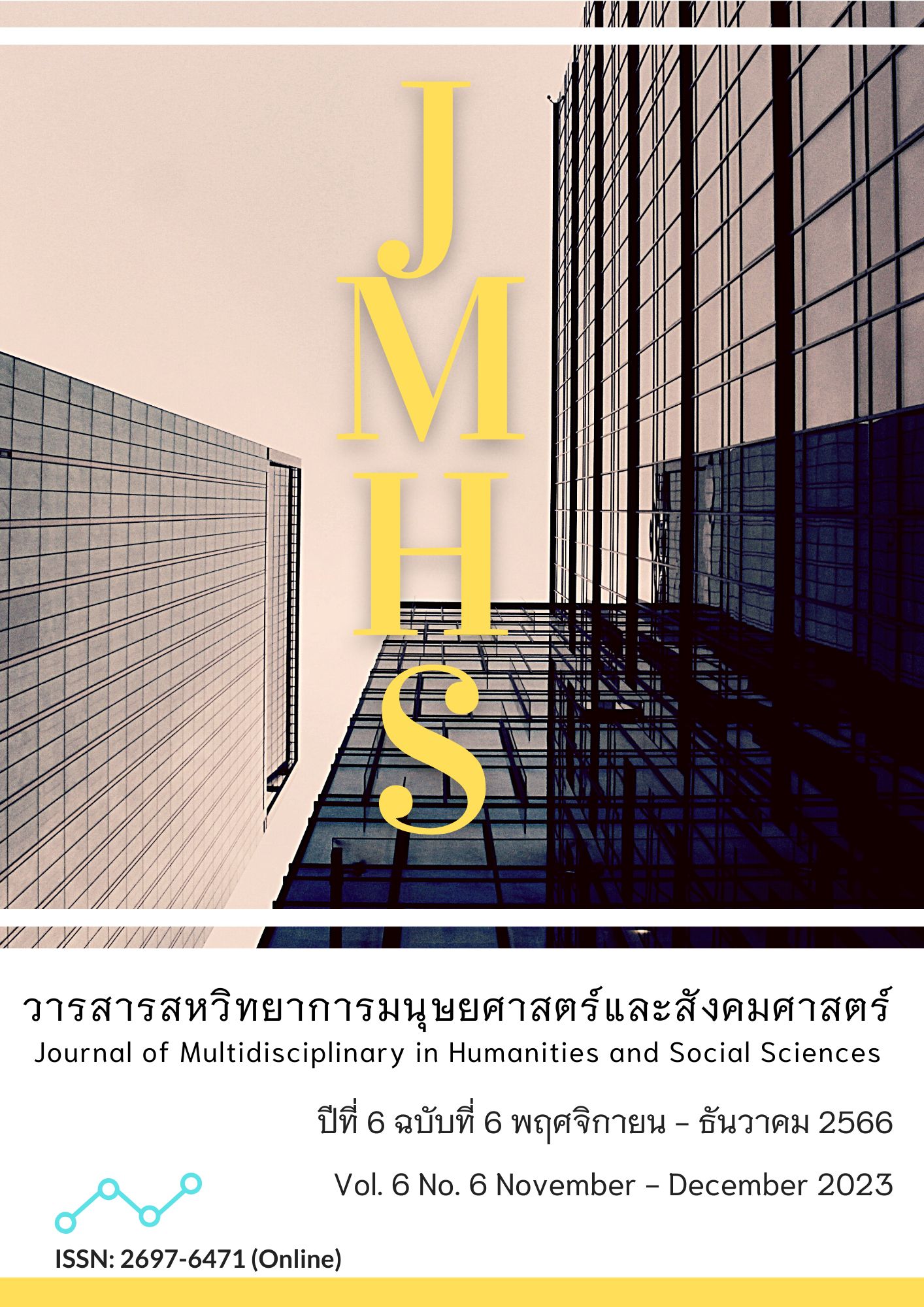Model of the Implementation According to the National Standards of Early Childhood Development Center
Main Article Content
Abstract
This article aimed to 1) draw lessons learned from implementing the National Standard for Early Childhood Development (NSECD) and passing the standard criteria. 2) develop the NSECD implementing model, and 3) suggest early childhood development (ECD). Using qualitative research with teachers and administrators of nine ECD centers, passing criteria covered six working units. They were selected by a specific method. The instruments for collecting data were of four types: 1) document analysis form; 2) group discussion form 3) Interview form; 4) School observation form. Analysis of data by content analysis.
The research results were found as follows: 1) ECD centers administered the NSECD with six components of ECD. 2) The NSECD implementing model consists of principles, purposes, components, implementation, and successful conditions of the NSECD implementation. 3) Suggestions for the development of early childhood development institutions included the authoritative working unit level, the policy director level, the policy supporter level, and the practice level.
Findings from this research will be beneficial to early childhood development institutions. To have operations meet the standards of the National Early Childhood Development Center. which contains six components of early childhood development center development. which is a best practice for the operation of an early childhood development center that aims for the success of early childhood development.
Article Details

This work is licensed under a Creative Commons Attribution-NonCommercial-NoDerivatives 4.0 International License.
Views and opinions appearing in the Journal it is the responsibility of the author of the article, and does not constitute the view and responsibility of the editorial team.
References
กระทรวงการพัฒนาสังคมและความมั่นคงของมนุษย์. (2558). มาตรฐานเด็กเล็กแห่งชาติ: คู่มือการดำเนินงานตามาตรฐาน. (พิมพ์ครั้งที่ 2). กรุงเทพฯ: ชุมนุมสหกรณ์การเกษตรแห่งประเทศไทย.
กระทรวงศึกษาธิการ. (2562). หลักสูตรการศึกษาปฐมวัย พ.ศ. 2560. (พิมพ์ครั้งที่ 8). กรุงเทพฯ: กระทรวงศึกษาธิการ.
กระทรวงสาธารณสุข. (2562). คู่มือเฝ้าระวังและส่งเสริมพัฒนาการเด็กปฐมวัย. (พิมพ์ครั้งที่ 2). กรุงเทพฯ: โรงพิมพ์องค์การสงเคราะห์ทหารผ่านศึก.
ขวัญจิรา จําปา, สุวดี อุปปินใจ, ไพรภ รัตนชูวงศ์ และ พูนชัย ยาวิราช. (2566). การพัฒนารูปแบบการบริหารโรงเรียนคุณภาพของชุมชน. วารสารสหวิทยาการมนุษยศาสตร์และสังคมศาสตร์, 6(1), 430-447. สืบค้นจาก
https://so04.tci-thaijo.org/index.php/jmhs1_s/article/view/263300
จรรยา ดาสา, ศิวพร ละม้ายนิล, เทพกัญญา พรหมขัติแก้ว และ ณวรา สีที. (2562). การพัฒนาสมรรถนะครูปฐมวัยในการจัดการเรียนรู้โครงงานสะเต็ม. วารสารมนุษยศาสตร์และสังคมศาสตร์ มหาวิทยาลัยราชภัฏอุบลราชธานี, 10(2), 281-294. สืบค้นจาก https://so01.tci-thaijo.org/index.php/humanjubru/article/view/191589
ณัฐภัสสร ชื่นสุขสมหวัง และ ปัทมศิริ ธีรานุรักษ์ จารุชัยนิวัฒน์. (2557). การประเมินความต้องการจำเป็นเพื่อพัฒนาสมรรถนะทางวิชาชีพของครูปฐมวัย. วารสารอิเล็กทรอนิกส์ทางการศึกษา, 9(1), 713-729. สืบค้นจาก https://so01.tci-thaijo.org/index.php/OJED/article/view/37268
ทิพย์วรรณ สุพิเพชร. (2566). นวัตกรรมการเรียนการสอนเพื่อการศึกษาในอนาคต. วารสารนวัตกรรมการจัดการศึกษาและการวิจัย, 5(2), 471-480. https://so02.tci-thaijo.org/index.php/jemri/article/view /259673
บุญยฤทธิ์ ปิยะศรี และ มาเรียม นิลพันธุ์. (2558). รูปแบบการพัฒนาวิชาชีพครูเพื่อเสริมสร้างสมรรถนะการสอนที่เน้นความแตกต่างระหว่างบุคคล. วารสารศิลปากร ศึกษาศาสตร์วิจัย, 7(1), 97-109. สืบค้นจาก https://so05.tci-thaijo.org/index.php/suedureasearchjournal/article/view/33247
ประสิทธิ์ หนูกุ้ง, เรชา ชูสุวรรณ และ วุฒิชัย เนียมเทศ. (2566). ยุทธศาสตร์การพัฒนาคุณภาพการศึกษาของสถานศึกษา ในสังกัดสำนักงานเขตพื้นที่การศึกษาประถมศึกษาจังหวัดสงขลาที่เน้นวัตถุประสงค์และผลลัพธ์สำคัญ (OKRs). วารสารสหวิทยาการมนุษยศาสตร์และสังคมศาสตร์, 6(1), 187-206. สืบค้นจาก https://so04.tci-thaijo.org/index.php/jmhs1_s/article/view/261872
ภูษิตา กระจ่างแสง และ นิยดา เปี่ยมพืชนะ. (2564). แนวทางการพัฒนาการดำเนินงานตามมาตรฐานสถานพัฒนาเด็กปฐมวัยแห่งชาติ ด้านการบริหารจัดการศูนย์พัฒนาเด็กเล็ก สังกัดองค์กรปกครองส่วนท้องถิ่นในเขตจังหวัดพระนครศรีอยุธยา. วารสารวิชาการธรรมทรรศน์, 21(3), 239-252. สืบค้นจาก https://so06.tci-thaijo.org/index.php/dhammathas/article/view/ 248933
วรวุธ ถาวรทรัพย์, ลินดา นาคโปย และ สายฝน เสกขุนทด. (2566).ปัจจัยที่ส่งผลต่อการเป็นชุมชนแห่งการเรียนรู้ทางวิชาชีพของสถานศึกษาสังกัดสำนักงานเขตพื้นที่การศึกษาประถมศึกษาสระแก้ว เขต 2. วารสารบัณฑิตศึกษา มหาวิทยาลัยราชภัฏสกลนคร, 20(88), 97-110. สืบค้นจาก https://so02.tci-thaijo.org/index.php/SNGSJ/article/view/256126
อนุศรา อุดทะ และ จิติมา วรรณศรี. (2563). รูปแบบการพัฒนาสมรรถนะของครูปฐมวัย สังกัดองค์กรปกครองส่วนท้องถิ่น. วารสารศึกษาศาสตร์ มหาวิทยาลัยนเรศวร, 22(4), 305-316. สืบค้นจาก https://so06.tci-thaijo.org/index.php/edujournal_nu/article/view/187413
Alme, H. (2021). Nature Kindergartens: A Space for Children’s Participation. Journal of Outdoor and Environmental Education, 24(2),113-131. https://doi.org/10.1007/s42322-021-00081-y
Eliason, C., & Jenkins, L. (1994). A Practical Guide to Early Childhood Curriculum. London: Macmillan.
Ernst, J., & Firdevs, B. (2019). Young Children’s Contributions to Sustainability: The Influence of Nature Play on Curiosity, Executive Function Skills, Creative Thinking, And Resilience. Sustainability, 11(15), 4212. https://doi.org/10.3390/su11154212
Ministry of Education in New Zealand. (2019). Laws Governing Early Learning: The Rules Governing Early Childhood Education in New Zealand. Retrieved from https://www. education.govt.nz/early-childhood
University of British Columbia. (2019). Emphasizing Social Play in Kindergarten Improves Academics, Reduces Teacher Burnout. ScienceDaily. Retrieved from www.sciencedaily.com/releases/2019/09/190917140317.


